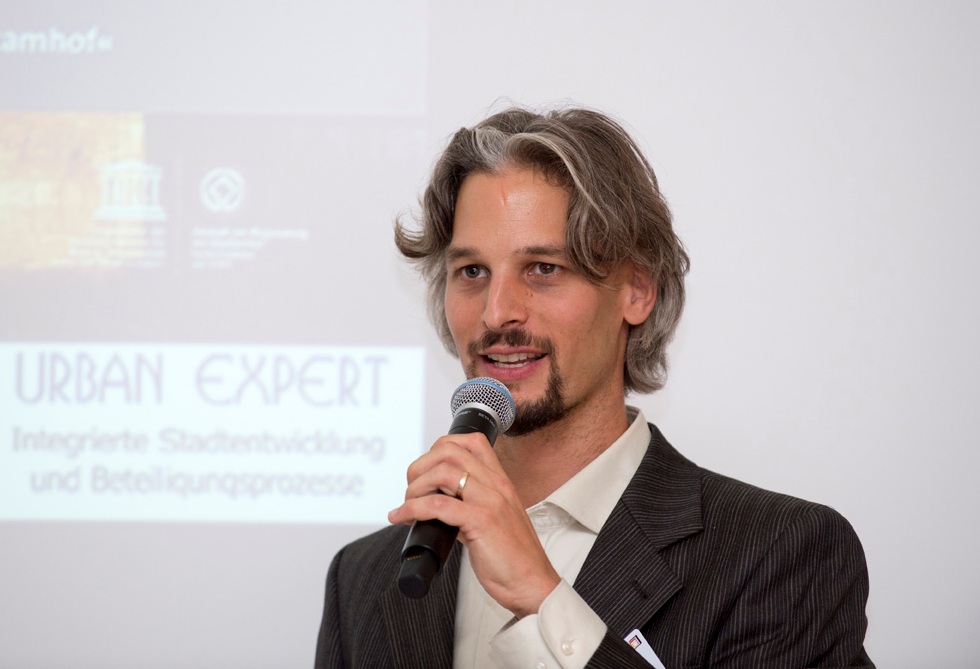ALT/BAU in 2020: Affordable housing, financial & legal tools and the use of GIS for the reactivation of vacant buildings
Edited on
12 January 2021ALT/BAU was also disrupted by the COVID 19 pandemic - but fortunately not to a stop! The partners continued to discuss and exchange in 2020 about solutions and interesting practices for the reactivation of vacant buildings in their territories. ALT/BAU Lead Expert Nils Scheffler and ALT/BAU communication officer Sabine Hausmann outline give an overview about the main topics:
- Affordable housing
- Financial and legal tools
- Use of geographic information systems (GIS)
Affordable housing

Many cities in Europe are struggling to provide affordable housing. URBACT and UIA held a series of webinars this year, where examples from the ALT/BAU network were presented (Housing Fair Finance and Alternative community-led housing). Also the ALT/BAU network exchanged ideas and interesting approaches on how to reactivate vacant buildings for affordable housing.
In Riga and Vilafranca, for instance, they encourage and enable future tenants to contribute to the renovation of a vacant flat and in exchange they are given the flat to rent at a lower price. This enables in particular owners, who are not able to finance the renovation of their flat, to put their empty flat back into use and avoid a further deterioration. A comparable approach to these two projects are known in Germany under the term “Wächterhäuser” (Guardian houses).
In Turin exists the “Programma Housing” led by Compagnia di San Paolo bank foundation. One project of the programme is to offer vacant apartments to rent and life in cohabitation to students and young workers and accompany both flatmates and owners in writing the rental agreement.
Also in Portugal there is an interesting initiative that supports the refurbishment of socially relevant spaces by the NGO Critical Concrete. They organize summer schools and one-year teaching programmes about “Sustainable and Social Architecture”. Students receive theoretical input, which is applied at the same time refurbishing socially relevant spaces.
An overview about the examples can be found in the 2nd thematic online report of the ALT/BAU network with further links.
Financial and legal tools

As a city in order to be capable of acting and being effective for the reactivation of vacant buildings and flats, they need activating instruments. These can be particularly financial and legal tools.
Turin is most advanced in applying financial tools that are offered by credit institutions to link the reactivation of vacant spaces with social innovation. Tools are ‘Social Impact Banking’, ‘Social bonds’ and ‘Microcredits’. Also in Seraing they apply two programmes to acquire and renovate under exploited buildings and to stimulate the energetic retrofitting. In Cataluña the regional government supports its municipalities, among them Vilafranca, with nearly ‘0’ interest credits for the application of pre-emptive rights. These are used to facilitate the acquisition of affordable housing for social purposes.
Chemnitz is experienced in the use of foreclosures by court order to activate owners or change of ownership of vacant buildings. Turin, Seraing and Constanta have a similar legal tool.
In Constanta and Riga tax fines and tax incentives are applied for buildings in poor state of construction. The intention of the tax fine is to incite the rehabilitation and reuse of the building.
For an overview about the examples take a look at the ALT/BAU Online meeting report about ‘financial and legal tools’ with further links.
Use of geographic information systems (GIS)

Also the use of GIS has turned out to be a valuable tool for the inventory and monitoring of vacant buildings during the ALT/BAU project. Therefore, in addition to the workshop about the inventory and monitoring of vacant buildings (see article), which took place in June 2019, a study was commissioned. It presents the different GIS tools available in ArcMap and its application areas for the inventory and monitoring of vacant buildings. Further it suggests GIS techniques which can support the transfer of the good practice example of Chemnitz Housing agency. This in the areas of identifying vacant buildings, identifying focus areas, defining priority buildings and implementing focused marketing of the buildings. The study can be downloaded here.
Alt/Bau: Outlook to 2021
The URBACT ALT/BAU network is coming to an end in 2021. Currently the good-practice compilation of all the inspiring examples of the city partners are put together and a guidebook is written that summaries the experience and lessons learnt from the project partners how to transfer and implement the good-practice example of Chemnitz ‘Housing agency’ for the reactivation of vacant buildings.
So stay tuned!
 Submitted by Nils Scheffler on
Submitted by Nils Scheffler on
